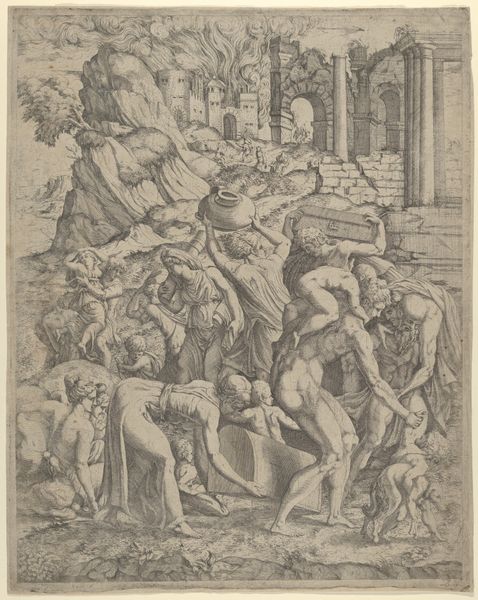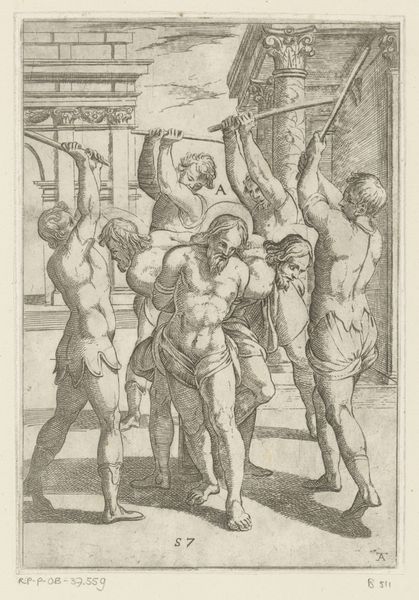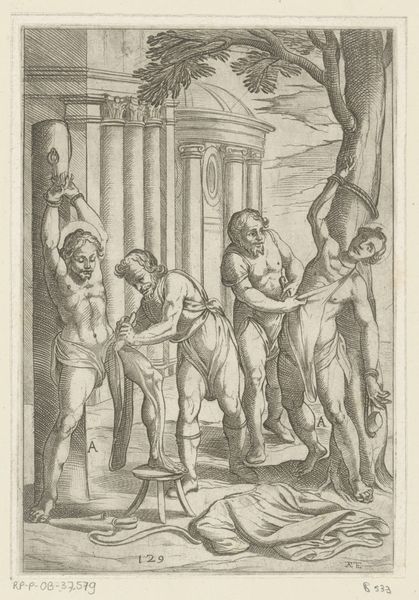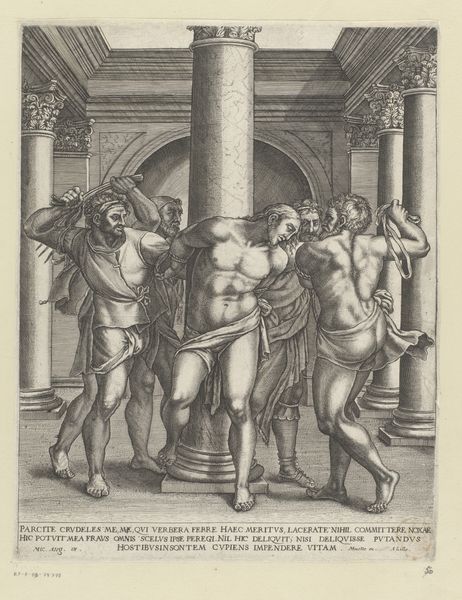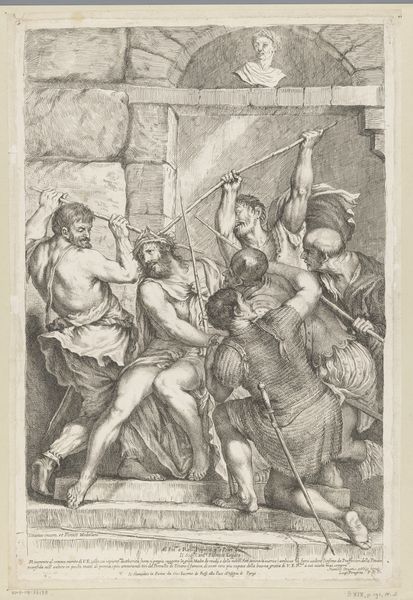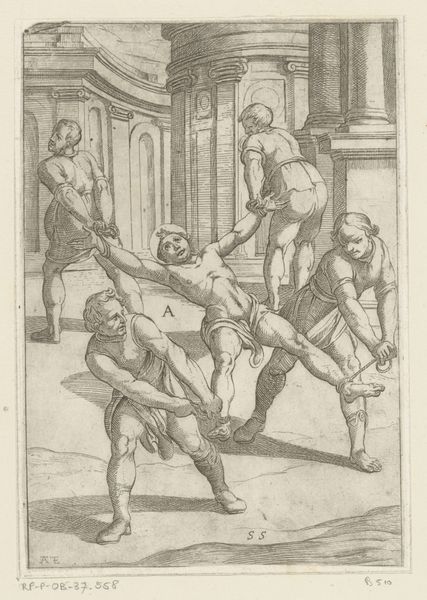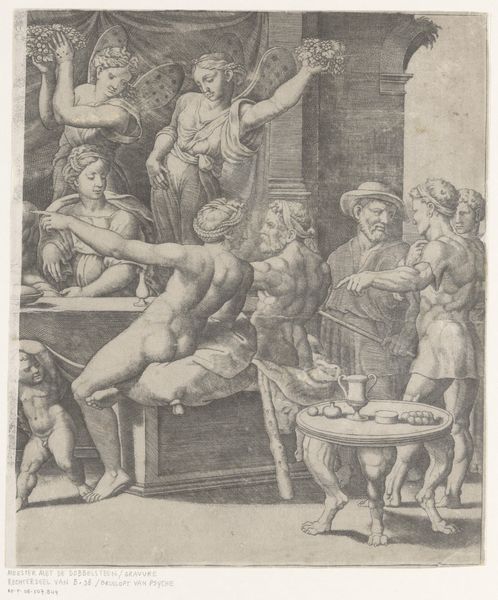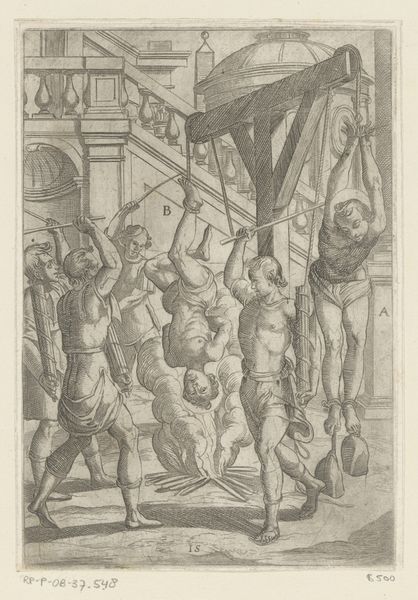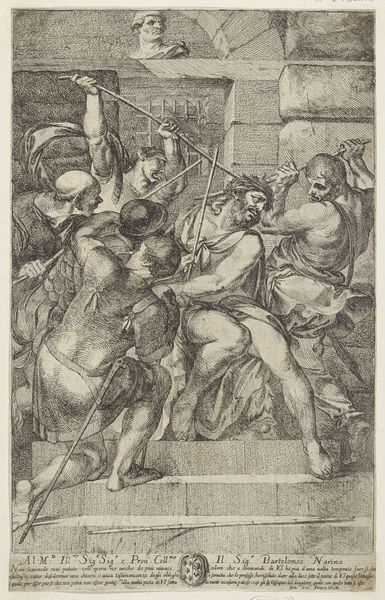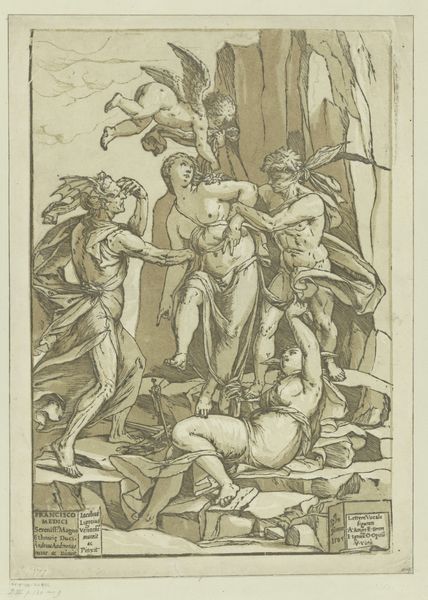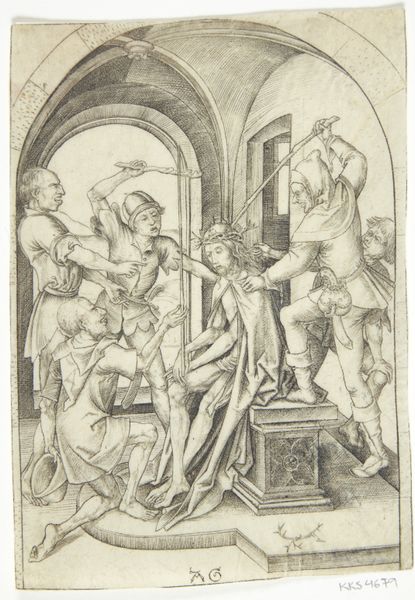
print, engraving
#
narrative-art
#
baroque
# print
#
old engraving style
#
figuration
#
history-painting
#
engraving
Dimensions: height 194 mm, width 133 mm
Copyright: Rijks Museum: Open Domain
Curator: Here we have an engraving titled "Foltering met dolk en wichelroede," dating from 1565 to 1630. Editor: Well, that’s certainly blunt. Immediately, the starkness of the black lines emphasizes the brutality of the scene; the figures appear contorted and trapped within the rigid architecture. Curator: The work is attributed to Antonio Tempesta and currently resides here at the Rijksmuseum. It’s a piece characteristic of the period, illustrating the baroque interest in dramatic narrative and the explicit depiction of historical events. Editor: Baroque indeed, you can almost feel the strain on their muscles. The composition itself highlights the laborious act; note the detail in the tools left at the base and the clear distinctions between figures designated to inflict violence. It all speaks to a brutal division of labor. Curator: Exactly. These scenes were intended to function within a specific political climate, showcasing power dynamics and sometimes, even sending veiled messages of resistance or moral commentary against abuses of authority, cloaked under historical pretense. It speaks to the relationship between art, power, and the public reception of images. Editor: What's striking is how it presents torture not just as violence, but also as a material process. You see the physicality of the act, the way bodies are manipulated, the specific instruments being used—like the wichelroede. It pushes one to contemplate what that implies about labor, body politics, and ultimately consumption by the public audience. Curator: That tension, between the representation of explicit content and the moral or political intent, is a defining feature of this era’s visual culture. What this tells us about 17th-century ethics and viewing habits is quite disturbing, to be honest. Editor: Right, we see not only the torturer's actions but also the artist’s labor manifest in the intricate line work. It demands we scrutinize the conditions and choices in both realms. A piece so intertwined with human hands forcing pain onto human flesh…the rawness almost jumps out at you. Curator: Yes, certainly not an easy artwork to process, and yet completely revealing of the period it came from, for what was consumed then shaped, in no small way, the history we analyze today. Editor: Indeed. "Foltering met dolk en wichelroede" makes you rethink the labor, context, and sheer violence of the era, making visible things easy to overlook.
Comments
No comments
Be the first to comment and join the conversation on the ultimate creative platform.


